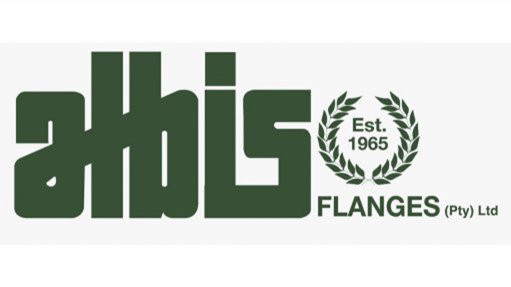Mesh networks- a multidirectional electrical superhighway
This article has been supplied.
By Nishandra Baijnath, Systems Architect, Power Systems, Anglophone Africa at Schneider Electric
Today, many power industry stakeholders are faced with mounting requirements for improved grid reliability, resilience, and distribution efficiency. It’s a challenge which requires power service providers to rethink their infrastructure, particularly making the most of smart grid philosophies in their deployments.
Enter mesh networks, which can overcome the limitations of traditional star networks also known as Y networks, providing the best of both radial feeder and ringed topologies to offer redundancy, flexibility, and robustness in power distribution.
Distribution 101
To understand both the relevance and value of mesh networks for electrical distribution, we need to take one step back, unpacking both radial feeders and ringed topologies.
Radial feeder system is a type of electrical distribution system where power flows unidirectionally from a single source (such as a substation) to multiple loads like consumers. Imagine a tree; its “source” is the root, and the branches represents the feeder lines that supply power to various endpoints.
Due to a radial feeders’ unidirectional nature, there is only path which means if there’s a fault or interruption, all downstream loads are affected.
On the other hand, a ringed topology is type of electrical distribution system where there are two feeders (or more) forming a closed loop or ring. Unlike the radial feeder, a ringed topology provides two paths for power flow. If one feeder fails, the network can be reconfigured so other feeder/s can still supply power to the loads.
Ringed topology is therefore less susceptible to outages – a fault on one part of the ring won’t affect the entire system.
Mesh networks, unlike a radial feeder or ringed topology, enable multiple power flow which can then include traditional grid power generation and distributed energy resources (DERs) from renewables.
A mesh network therefore allows for:
- Multiple sources which can be generators, substations, battery energy storage systems or renewable energy installations.
- Multiple loads - similarly, there can be multiple loads (consumers) connected to the network. These loads could be residential, commercial, or industrial.
- Redundancy and flexibility – a major differentiator, should one source fail or a fault occurs, the system can reconfigure itself by rerouting power through alternative paths.
- Isolation and restoration - when a fault (such as a short circuit) occurs, the network employs techniques like fault location isolation and service restoration (commonly known as FLISR).
Isolation for continuous operations
It is also the abovementioned fault detection which truly set mesh networks apart. In a typically scenario, the system will detect the fault (which can be broken conductor or other equipment failure).
It will then isolate this fault by, for example, opening a switch or a breaker at specific location which will disconnect the faulted section. The loads - that were initially supplied by the faulted section - are redirected to other available sources. These alternate sources ensure continuity of power supply.
Once the fault is repaired, the system closes to switch or breaker, restoring the original configuration. Mesh networks therefore offer:
- Resilience -mesh networks are highly resilient because they can adapt dynamically to faults.
- Minimised outages - even during faults, most loads remain powered due to alternative paths.
- Efficient utilisation - energy flows through the most efficient paths, minimising losses.
- Scalability - mesh networks can accommodate additional sources and loads as needed.
At Schneider Electric, our EcoStruxure Microgrid Advisor IoT platform optimises the operations of mesh network and other DERs by leveraging predictive algorithms and real-time data, whilst enhancing performance, optimising energy usage, and supporting energy security.
This real-time optimisation is achieved through weather data subscription which allows for 24-hour advance forecasting on what renewable energy production is expected. Furthermore, when the scheduled grid outage period is added, the machine learning (ML) algorithms will determine the best way to manage the available energy resources in addition to enhancing the load management based on expected available energy.
Article Enquiry
Email Article
Save Article
Feedback
To advertise email advertising@creamermedia.co.za or click here
Comments
Press Office
Announcements
What's On
Subscribe to improve your user experience...
Option 1 (equivalent of R125 a month):
Receive a weekly copy of Creamer Media's Engineering News & Mining Weekly magazine
(print copy for those in South Africa and e-magazine for those outside of South Africa)
Receive daily email newsletters
Access to full search results
Access archive of magazine back copies
Access to Projects in Progress
Access to ONE Research Report of your choice in PDF format
Option 2 (equivalent of R375 a month):
All benefits from Option 1
PLUS
Access to Creamer Media's Research Channel Africa for ALL Research Reports, in PDF format, on various industrial and mining sectors
including Electricity; Water; Energy Transition; Hydrogen; Roads, Rail and Ports; Coal; Gold; Platinum; Battery Metals; etc.
Already a subscriber?
Forgotten your password?
Receive weekly copy of Creamer Media's Engineering News & Mining Weekly magazine (print copy for those in South Africa and e-magazine for those outside of South Africa)
➕
Recieve daily email newsletters
➕
Access to full search results
➕
Access archive of magazine back copies
➕
Access to Projects in Progress
➕
Access to ONE Research Report of your choice in PDF format
RESEARCH CHANNEL AFRICA
R4500 (equivalent of R375 a month)
SUBSCRIBEAll benefits from Option 1
➕
Access to Creamer Media's Research Channel Africa for ALL Research Reports on various industrial and mining sectors, in PDF format, including on:
Electricity
➕
Water
➕
Energy Transition
➕
Hydrogen
➕
Roads, Rail and Ports
➕
Coal
➕
Gold
➕
Platinum
➕
Battery Metals
➕
etc.
Receive all benefits from Option 1 or Option 2 delivered to numerous people at your company
➕
Multiple User names and Passwords for simultaneous log-ins
➕
Intranet integration access to all in your organisation

















